With varied flora and Fauna, Africa is home to unique wildlife and physical features. However, with the ever-growing populations and their increasing demand for land, food and water, exacerbated by poaching, more and more species are becoming endangered and others may get extinct in the near future.
In 1964, the International Union for Conservation of Nature (IUCN) established their ‘Red List of Threatened Species’. This Red List has evolved over the decades to become the gold standard for understanding the conservation status of all animal, fungi and plant species globally, providing critical information about range, population size, habitat and ecology of all potentially threatened species.
The Red List places species into one of nine categories annually: Not Evaluated, Data Deficient, Least Concern, Near Threatened, Vulnerable, Endangered, Critically Endangered, Extinct in the Wild and Extinct.
When species are referred to as endangered, it’s generally accepted that they will be in one of three specific Red List categories: Critically Endangered, Endangered and Vulnerable.
However, with great thanks to the foresight of conservationists past and present, many of the most endangered animals in Africa are being protected in reserves and national parks. The list below details all African animals that are currently classified as either critically endangered, endangered, or vulnerable.
- Pangolin
Population: Not Known

Regardless of their numbers in the wild being unknow, the Pangolins top Africa’s to endandered animal majorly because of having the dubious honor of being the most illegally trafficked species in Africa. The pangolin is a delightful, gentle creature and the world’s only scaled mammal. Living a generally secretive life, many people never come to see a pangolin in their life time. Regardless of its gentleness and unique character, some people and traditions especially in the middle East falsely believe its scales have medicinal values. The increased demand for pangolin scales that has made their population to decrease rapidly over time.
However, with conservationists taking steps into guarding the Pangolin, unfortunately, pangolins are hard to census because they are solitary and nocturnal. Researchers don’t have reliable data on their numbers.
2. Addax
Population: <100 individuals
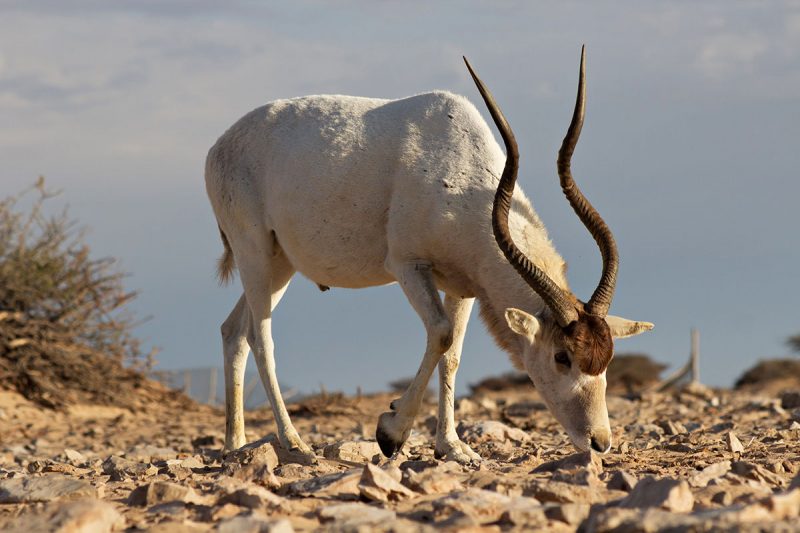
Not known to many, the Addax is a white-furred, desert-loving antelope. The addax is nearly extinct in the Saharan deserts. Their numbers continue to dwindle due to poaching and the ecological disturbance caused by oil exploration. The animal is among the endangered African animals with a recent 2016 aerial survey finding just three remaining addaxes. While 100 may still exist, researchers simply can’t be sure.
3. Mountain Gorilla
Population: about 880
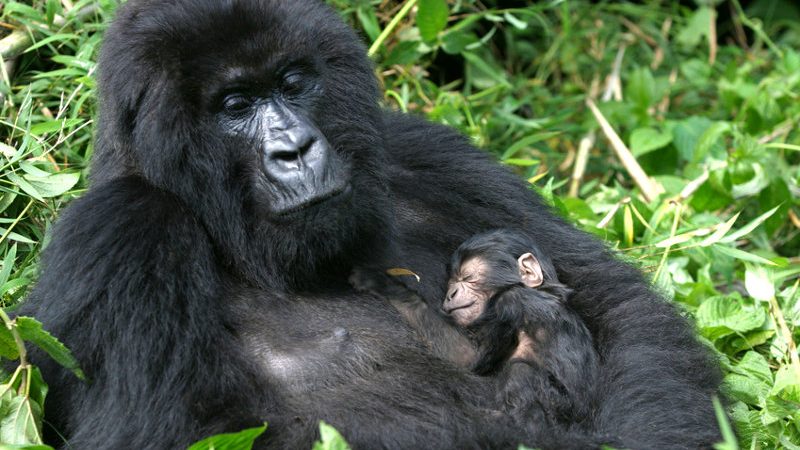
Although mountain gorillas are still considered one of the most endangered animals in Africa, the good news is that their numbers are actually on the increase. Seeing wild mountain gorillas is one of the greatest sights in the world of wildlife viewing. Like elephants, gorillas have extremely strong family connections. Some rangers have devoted their lives to raising juvenile gorillas orphaned by poaching.
The remaining populations that exist live in forested land on a mountain range that stretches through Rwanda, Uganda and the Democratic Republic of the Congo. National and international laws protect mountain gorillas from being hunted or captured everywhere they exist. It is the only species of great ape with an increasing population.
4. Rothschild giraffe
Population: about 2,500
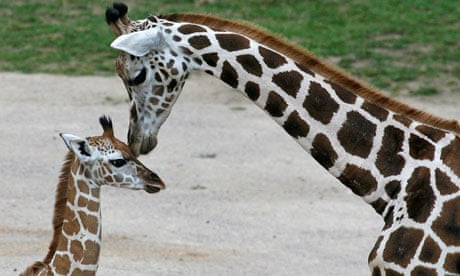
Also known as the Baringo giraffe, The Rothschild giraffe made it to the red list of endangered species. It was named after the London zoologist Lionel Water Rothschild who first described the subspecies in the early 1900s. As a subspecies of the Northern giraffe, it was once a thriving species but has now lost most of its natural environment to human encroachment.
The giraffe species can grow up to 6 meters tall and is distinguished by the markings that only cover half of the legs. Going by the 2019 count, there were about 2500 Rothschild giraffes, residing in conservation areas in Kenya and Uganda.
5. Black Rhino
Population: about 5,000
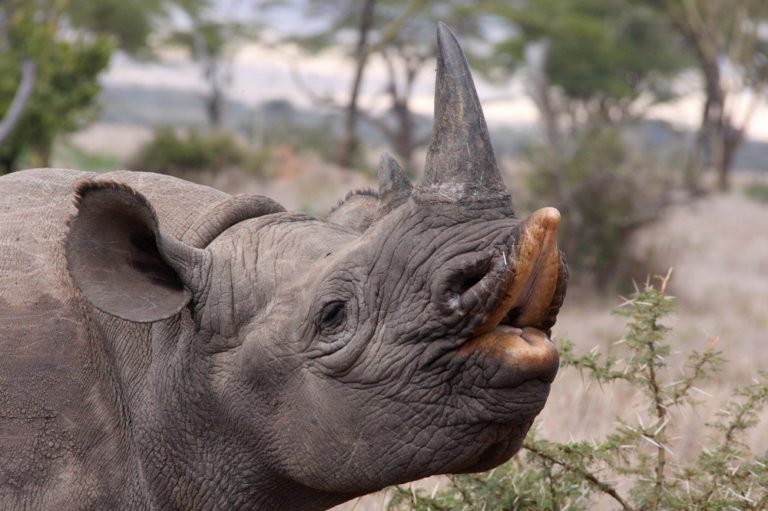
There could have been up to 850,000 black rhinos during most of the 20th century. It is sad that, after successful conservation efforts increased their numbers dramatically in the 1960’s, once again, white rhino has become one of the most endangered animals in Africa. This is due to illegal poaching to satisfy the increased demand for their horn by Asian markets. More so, during courtship, conflicts over a female may result in the death of one of the competing males.
However, conservationists remain hope full about increase in their numbers given the black Rhino’s gestation period. The gestation period is between 419 and 478 days, with an average interval of 2.5-3.5 years between calves with breeding occuring throughout the year.
6. African Wild Dog
Population: about 6,600
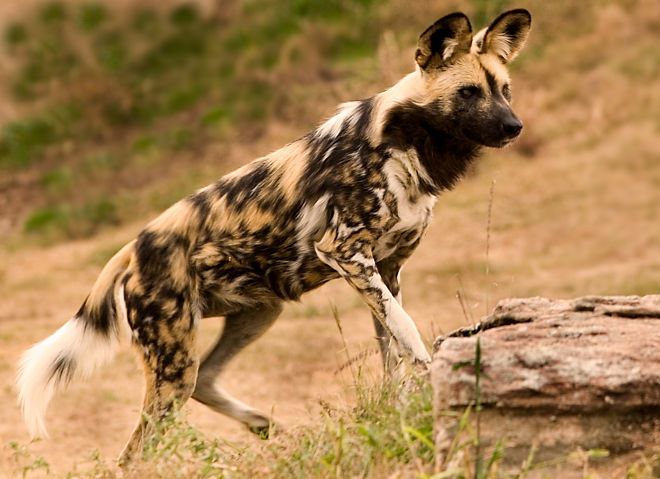
The world’s most effective predator is one of the most rarely seen safari animals.The African wild dogs have become one of the most wished-for safari sightings. Sightings on safari are often by luck, as the dogs cover huge distances in search of prey, and it is only when they are denning (usually the dry season months) that they remain in the same place for a few weeks. Their packs require lots of protected space because they can range over 25 miles regularly and consequently habitat fragmentation has caused their decline. Other threats include diseases from domestic dogs, persecution by livestock farmers, road accidents and incidental snaring.
7. Cheetah
Population: about 6,700

Cheetahs have vanished from approximately 90 percent of their historic range in Africa, and are extinct in Asia except for a single, isolated population of perhaps 50 individuals in central Iran. The world’s fastest mammals are also one of nature’s toughest independent mothers. Female cheetahs live in solitude, raising their young, hiding them from predators and hunting for them alone. Cheetahs are frequently killed by farmers, either preemptively or in retaliation for livestock predation, even though the actual damage they cause to livestock is relatively minor.
Cheetahs are profoundly affected by loss of prey from human hunting and the development of land for agricultural and other purposes. Direct hunting in some parts of Africa for skins contributes to cheetah population declines, as does the illegal trade in live cubs and adults, many of which die during transport. While cheetahs are officially listed as vulnerable, many in the wildlife conservation community think they should be considered endangered. Researchers know of roughly 3,500 cheetahs and optimistically estimate a comparable amount live in similar habitats that have not been surveyed.
8. African Penguin
Population: about 21,000
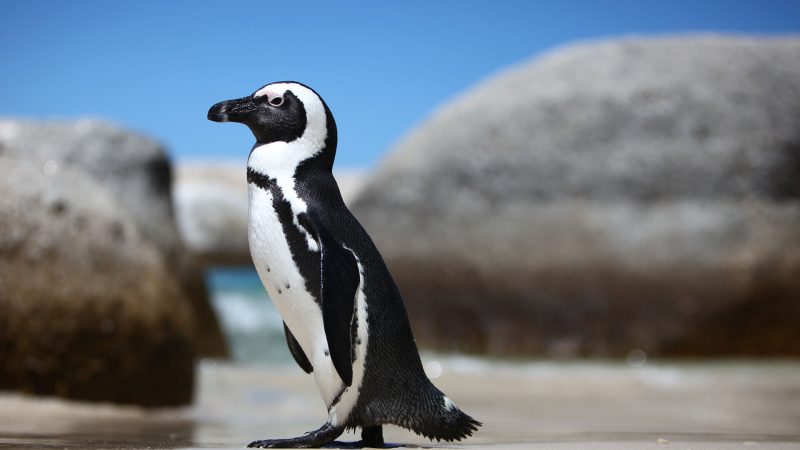
The African Penguin is a species of penguin confined to southern African waters. Like all extant penguins, it is flightless, with a streamlined body and wings stiffened and flattened into flippers for a marine habitat. Adults weigh an average of 2.2–3.5 kg (4.9–7.7 lb) and are 60–70 cm (24–28 in) tall. To many, it is hard to imagine that the African penguin is one of the most endangered species in Africa regardless of their vast visibility around the Boulders Bay on the Cape Peninsula.
However, sadly, African penguin numbers have fallen in recent years due to depleted fish stocks from over fishing and fish stocks moving further west due to climate change. The African penguin is also at risk from oil spills. This is the only penguin species breeding in Africa, and they are easily recognizable by their dapper black and white plumage and jack-ass braying call.
9. Hooded Vulture
Population: about 197,000
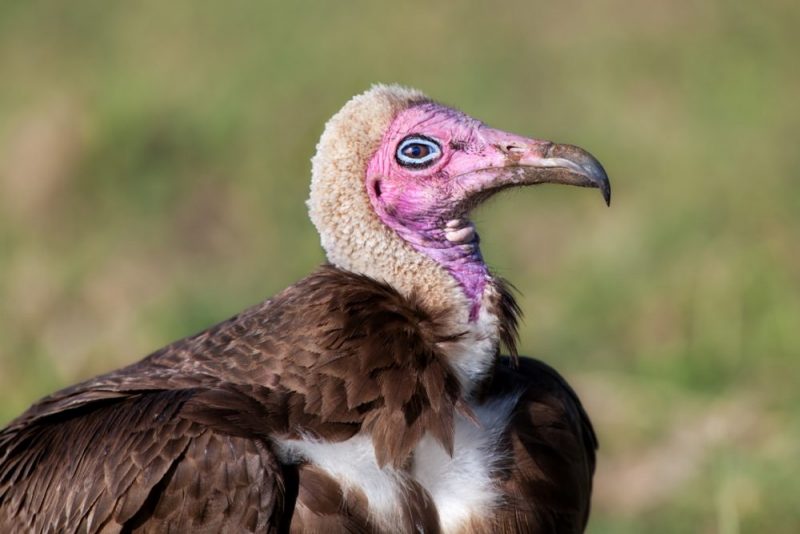
The Hooded Vulture is currently listed as “Critically Endangered” on the IUCN Red List owing to many cases of indiscriminate carcass poisoning, increase in trade for traditional medicine, hunting, persecution as well as habitat loss and degradation. Vultures are a critical component in the African landscape but their numbers remain decreasing as compared to other related birds. Without vultures clearing carcasses, there is a risk in the increase of disease as has happened in India, where they have lost 95% of their vultures. The hooded vulture is now one of the most endangered species in Africa and recently upgraded to Critically Endangered.
10. African Elephant
Population: about 415,000
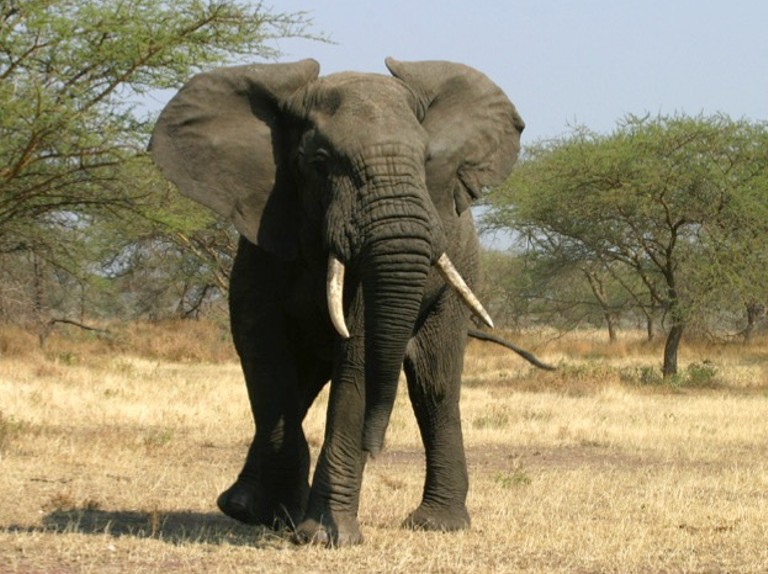
Between 5 and 10 million elephants roamed Africa in 1930. The African elephants are threatened by habitat loss and fragmentation. Poaching for their illegal ivory trade is also a threat in several range countries as well. Unlike other animals, African elephants have incredibly strong family relationships. They’re astonishingly intelligent and compassionate, and poaching creates innumerable elephant orphans.
In addition, the African elephants take more time to reproduce in comparison to other mammals. They give birth every three to six years, and it takes nearly two years to carry a single calf to term. It’s harder for elephant populations to rebound from threats because of this thus rendering them vulnerable especially where their disappearance is often.
About Guide2Uganda
Guide2Uganda (www.guide2uganda.ug) is the most comprehensive source of information about Uganda that exists on the web, with more content on Uganda and surrounding towns, attractions, museums and galleries than any other online guide that currently exists for Uganda as well as being a dynamic news and comprehensive events driven site with content being added daily.
According to WeFollow & Peer Index (whom both measure online influence) we are among the most influential online media organizations in Uganda. We were also awarded for ‘’Best Destination Website in Uganda’’ by Jumia Travel Uganda in the 2017-2018 Africa Travel Awards. If you are planning a visit to Uganda you can always reach us on; info@guide2uganda.ug



